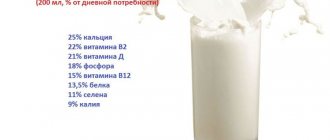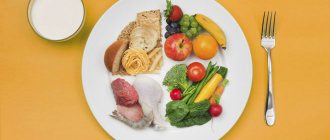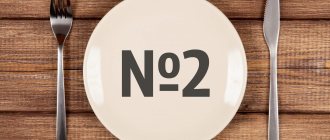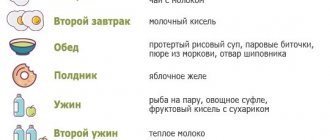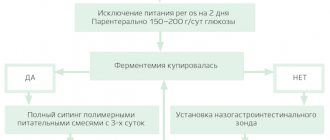Colitis is an inflammatory disease of the colon. Treatment of colitis is always complex. A prerequisite for successful treatment is adherence to a diet.
If you have
chronic colitis
, you should
undergo regular preventive treatment
.
General rules. Duration of the diet.
Nutrition for colitis should be balanced in nutrients. The main goal of the diet is to reduce the load on the entire digestive tract.
- General rules of nutrition for intestinal colitis:
- Fractional meals. 5-6 times a day.
- Give preference to pureed and semi-liquid foods.
- Food should not be hot or cold. The optimal food temperature is 30-40 C
- Elimination of foods containing fiber
- Reduce salt intake to 8-10 grams per day
- Maintain a drinking regime (at least 1.5 liters per day)
- Food can be boiled or steamed.
Nutrition for colitis during exacerbation.
During an exacerbation of colitis, diet is very important. The goal of the diet is to stop inflammation in the intestines, restore proper digestion and eliminate the processes of fermentation and putrefaction.
To do this, it is recommended to completely eliminate foods that cause fermentation or rotting. For diarrhea, it is necessary to exclude foods rich in fiber, vegetables and bran. For constipation, on the contrary, you need to strengthen peristalsis and eat a lot of vegetables and cereals.
Dishes should be steamed or boiled. Food must be ground, chopped or pureed. It is better to overcook the porridge or use special porridge for baby food.
Nutrition for chronic colitis.
Outside of exacerbation, following a diet for colitis allows you to avoid exacerbation.
The diet is based on porridge boiled in water and semi-liquid food. You can add butter to the porridge. Soups are prepared on the second broth from lean meat. Vegetables can be added in small quantities, pureed.
You can eat eggs in the form of steamed omelettes, fish cutlets or steamed minced beef.
You can drink weak black and green teas, herbal tea. Coffee is not recommended, but can be replaced with chicory. The daily volume of water consumed should be about 1.5 liters.
Indications for use.
Therapeutic diet No. 4 according to Pevzner is recommended for chronic colitis and enterocolitis during their exacerbation, for acute gasteroenterocolitis in the initial stage of the disease (in this case, the diet is followed after fasting days), for dysentery, typhoid fever, intestinal tuberculosis during the first five to seven days from the onset of the disease.
Nutritional features.
The food is as gentle as possible on the intestines in mechanical, chemical and thermal terms. Food is boiled, steamed, used in puree or mashed form. A split diet is recommended - up to five to six times a day, subject to bed rest. In this case, the food should be warm. The reduction in the energy value of food is achieved mainly due to carbohydrates and fats. The amount of proteins corresponds to the physiological norm for humans. Salt intake should be reduced. The diet excludes solid, cold and hot, as well as spicy foods. The diet should not contain foods that promote fermentation and putrefactive processes in the intestines, difficult to digest foods, foods that stimulate bile secretion, increased work of the pancreas, and can irritate the liver.
Chemical composition and energy value.
Proteins – 100 g (60-70% animals), fats – 70% (40-50 g butter), carbohydrates – 250 (30-50 g sugar), salt – 8-10 g, free liquid – 1.5 l . The calorie content of the diet is 2050 kcal.
| Product table | |
| Authorized Products | Prohibited Products |
| Bread products | |
| Wheat bread made from premium flour, savory cookies, wheat bread crackers, day-old baked goods in limited quantities. | Rye and fresh bread, as well as pastry products, pancakes, pancakes. |
| Milk and dairy products | |
| Mashed cottage cheese, fresh or unleavened, steam soufflé. | Whole milk, kefir, cream, sour cream, cheese. |
| Soups | |
| Soups in low-fat, weak meat, chicken or fish broth with rice, semolina, noodles, meatballs. Slimy soups made from the same broths with butter are also useful. | Soups with strong, fatty broth, milk soups, cold and bean first courses. |
| Meat and meat dishes | |
| Lean meats, beef, veal, chicken, turkey, pureed, minced or boiled in water or steamed. If minced meat is prepared from meat, then instead of bread you can add a little rice to it. The minced meat is passed through a meat grinder with a fine grid two or three times. You can prepare various types of jellied dishes from pureed meat. | Fatty meats, pork, lamb, goose, duck, sausages, ham, smoked meats, canned meat. In addition, the meat should not be stewed or fried. |
| Fish and fish dishes | |
| Low-fat varieties of fish, for example, pike perch, carp, perch. You can cook it in pieces or it can be mashed, chopped, boiled in water or steamed, or aspic. | Fatty fish, salted, smoked, marinated fish, canned fish. |
| Cereals and pasta | |
| Rice, semolina, rolled oats, pureed buckwheat. They can be cooked in water or in low-fat broth, in the form of steam puddings. Steamed vermicelli is also allowed. | Millet, pearl barley and barley cereals, crumbly porridges, legumes, and pasta casseroles. |
| Vegetables | |
| Vegetables can be eaten only in the form of decoctions. | Vegetables in their natural form are completely excluded. |
| Eggs and egg dishes | |
| Soft-boiled eggs, steam omelet, but no more than one egg per day. | Raw, fried, hard-boiled eggs. |
| Fats | |
| Butter in its natural form, which is added to dishes. | All types of oils and fats except butter. |
| Berries and fruits | |
| Applesauce, jelly and veins from the juices of non-acidic berries, black currants, blueberries, dogwoods, quince, bird cherry. | Fresh fruits and berries, dried fruits, compotes. |
| Sweets | |
| Sugar in limited quantities. | Honey, jam. |
| Beverages | |
| Tea (especially green tea infusion), coffee, cocoa in water, juices of non-acidic berries and fruits diluted with water, decoctions of dried berries, rose hips. | Coffee and cocoa with milk, kvass, grape juice, carbonated and cold drinks. |
Types of treatment table No. 4.
Table No. 4 is divided into three types - No. 4a, No. 4b and No. 4c.
Table No. 4a is indicated for colitis, when fermentation processes clearly predominate. In this case, all the rules of the general table No. 4 apply, but foods and dishes rich in carbohydrates are maximally limited, for example, cereals, bread no more than 100 g per day, sugar no more than 20 g per day. At the same time, the protein content increases due to pureed cottage cheese, meat dishes, etc.
Table No. 4b is recommended for chronic colitis when the exacerbation subsides. The same permits and prohibitions on products apply, but the diet should mainly contain yesterday's bread, cereal soups in a weak broth (meat or fish), pureed porridge (except millet), non-acidic sour cream, kefir, yogurt, compotes and jelly from sweet fruits and berries, butter. Salt is allowed in the amount of 8-10 g.
Table No. 4c is indicated for acute intestinal diseases during the recovery period. This diet serves as a transition to a balanced diet. It is also prescribed outside of exacerbation for concomitant diseases of other organs of the digestive system.
Types of diets:
In case of exacerbation of chronic colitis or in acute form of colitis with loose stools (diarrhea), diet No. 4 is recommended. This diet does not recommend foods rich in fiber. All dishes that cause rotting and fermentation are also excluded.
If the disease occurs with constipation, then diet No. 3 is recommended. This diet recommends foods that enhance intestinal motility and are rich in fiber.
In case of chronic colitis without exacerbation, it is necessary to adhere to diet No. 2.
Colitis: general information
Intestinal colitis is a serious disease
Colitis is an inflammation of the mucous membranes of the colon. Classification of colitis is carried out according to several criteria.
Depending on the severity of symptoms and the nature of the course, acute and chronic forms of colitis are distinguished. An acute attack is accompanied by inflammation of the stomach (gastritis) and small intestine (enteritis).
Chronic colitis occurs with the same symptoms as acute colitis, only in a less pronounced form. In this case, periodic exacerbations are possible.
Depending on the conditions of development of the disease, there are:
- Ischemic colitis is accompanied by disruption of the abdominal aorta and, as a consequence, the blood supply to the gastrointestinal tract.
- Infectious colitis - occurs as a result of the activity of pathogenic microorganisms.
- Ulcerative colitis occurs under the influence of environmental factors and under the influence of the genetic characteristics of the body.
- Toxic colitis - develops in connection with the use of a number of medications.
- Radiation colitis develops as one of the consequences of chronic radiation sickness.
The inflammatory process can cover both part of the colon and the entire organ. Depending on the affected area, the following types of colitis are distinguished:
- proctitis (inflammation of the rectum and lower part of the colon);
- sigmoiditis (inflamed sigmoid colon - the section in front of the rectum);
- transversitis (inflammation of the transverse colon - the section in front of the sigmoid colon);
- typhlitis (inflamed cecum - upper part of the large intestine);
- pancolitis (all parts of the colon are inflamed).
It is possible to develop inflammatory processes in two adjacent sections of the rectum. Factors that increase the risk of developing colitis include the following:
- decreased immune resistance;
- digestive system infections;
- genetic pathologies;
- food and other types of poisoning;
- mechanical injuries of the colon;
- exposure to stress;
- poor nutrition.
Regardless of the etiology of colitis, general symptoms of the disease can be identified. The acute form is accompanied by severe pain in the peritoneum, diarrhea, possibly with bloody and mucous discharge, a constant urge to defecate, bloating and rumbling in the abdomen.
Recipes for dietary dishes for colitis.
Sample daily menu from a diet for intestinal colitis:
Breakfast:
Boiled oatmeal with butter. Apple compote.
Lunch:
Steamed beef cutlet. Blueberry jelly.
Dinner:
Rice soup with chicken meatballs. Boiled sea fish. Herb tea
Afternoon snack:
Low-fat cottage cheese casserole. Apple compote.
Dinner:
Meat casserole. Weak tea.
Before bedtime:
Compote or jelly.
Recipes
Colitis implies many restrictions in the diet, but many interesting and tasty dishes can be prepared based on the permitted products. It is important to follow the main principles of the diet program. The ingredients are crushed and, if necessary, turned into puree. Cooking can only be done by steaming, boiling or stewing. The amount of salt is limited.
First meal
Chicken cream soup with rice:
When colitis worsens, you should not drink strong black coffee. Instead, they brew a drink from chicory.
- To prepare the dish you will need boiled chicken fillet, crackers, water, 5 g butter, salt, rice.
- Boil and puree the rice.
- Grind chicken meat in a blender.
- Combine the pureed cereal and chicken.
- Dilute the preparation with water.
- Boil the soup, stirring it regularly.
- A few minutes before cooking, add salt and butter.
Broth with meatballs:
- To prepare the dish you will need 300 g of meat, 400 ml of light meat broth, water, salt and 50 g of bread.
- Pass the meat through a meat grinder twice.
- Soak the bread in water, add the ingredient to the minced meat.
- Form the minced meat into balls.
- Bring the broth to a boil, add the meatballs.
- Cooking time is approximately twenty minutes.
Second courses
Fish in white sauce:
- To prepare the dish you will need fish fillet, one third of a glass of milk, half a glass of fish broth, a teaspoon of butter, one yolk, salt, a teaspoon of flour.
- Place the fillet in a baking dish, pour fish broth over the preparation.
- The cooking time for the fish is twenty minutes.
- Drain off the broth (used for sauce).
- Beat the yolk with milk. Introduce the preparation into the broth.
- Add flour, butter, salt, beat again.
- Place the fish on a plate and season with white sauce.
Beverages
Blueberry jelly:
- To prepare the drink you will need water, blueberries, sugar, potato starch.
- You need to squeeze the juice out of the blueberries.
- Pour water over the pulp and boil for ten minutes.
- Add half the blueberry juice and a few tablespoons of potato starch into the mixture.
- Constantly stirring the jelly, after a few minutes add the rest of the juice.
- The drink should be moderately thick.
Rose hip decoction:
- To prepare the drink you will need rose hips (fruits) and water.
- You can use whole berries (fresh or dried) or a chopped version.
- Boil a liter of water.
- Add a few teaspoons of the ingredient.
- Boil the workpiece for thirty minutes (water can be added).
- Strain the drink before drinking.
Nutritionist comments:
For colitis, therapeutic nutrition is a prerequisite for successful treatment.
A properly selected diet and its adherence can quickly get rid of the unpleasant symptoms of the disease. “The right choice of a sanatorium is a significant step towards maintaining and increasing health. “Gorny” is a resort complex that combines the experience and knowledge of Russian and Soviet balneology. The presence of modern medical equipment and innovative installations, the professionalism of the staff and love for their work will serve as the key to extending longevity,” - the head physician of the sanatorium, Alexander Olegovich Karaulov.
